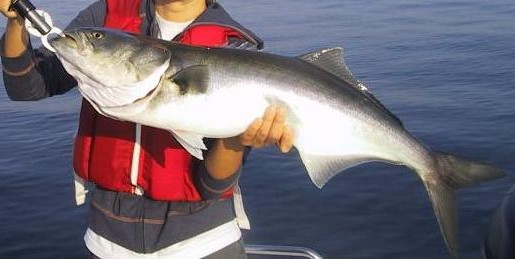Bluefish

The bluefish is the Rodney Dangerfield of fish. It gets no respect, and oddly it is the fish that does so well when it gets a little respect.
Undoubtedly bluefish is a fine game fish, easy and exciting to catch on a rod, but once it is caught getting the bluefish to the table is almost as complicated as the plot in Caddy shack.
The best known recipe (and probably a good Rodney Dangerfield joke) for bluefish is to cook a bluefish on two layers of brown paper bags in a 350 degree oven for two hours. Once the cooking is done the bluefish is thrown out and the brown paper bags are ready to eat.
That joke is barely better than: Take my wife, please. Bluefish is actually a delicacy, but there is only one way to make it a delicacy; bluefish needs to be fresh. Not just pretty fresh, absolutely fresh. If it is from the bay to the table in one or two days, bluefish is a treat.
Bluefish comes in three sizes and each size is dealt with differently. The smallest size is generally called a snapper. On the jersey shore a snapper is a baby bluefish, the next size is called a cocktail bluefish, and then there are the large bluefish that are over xx pounds. The large bluefish are generally eaten as fillets, while the cocktail and snapper are often prepared whole. The small fish barbecue nicely and possibly the cocktail size received its name for making a nice appetizer at the early stage of a backyard barbecue.
It is often claimed that the larger fish have stronger flavor, but that might not be true, it might be that the peculiar color of those large fillets suggests a stronger flavor. The relatively high oil content of the fish makes it very suitable for spicy seasoning. A Jamaican jerk seasoned bluefish fillet is a real treat.
Description: aggressive sharp teeth 1-30 pounds, most caught in this area are 3-15 pounds schools blue/green back, silver sides, big mouth, eat smaller fish can be 7-35 inches long
Preparation:
Recipes:
Latin name
Taxonomy, classification
Size
Weight
Season: Late spring to late November
Catch Method
Catch Restrictions
New Jersey
New York
Federal
Sustainability
Landings (tonnage)
Belford
Raritan Bay
Food Description
